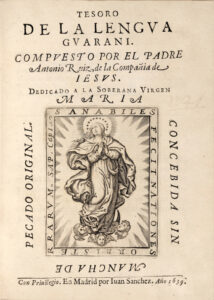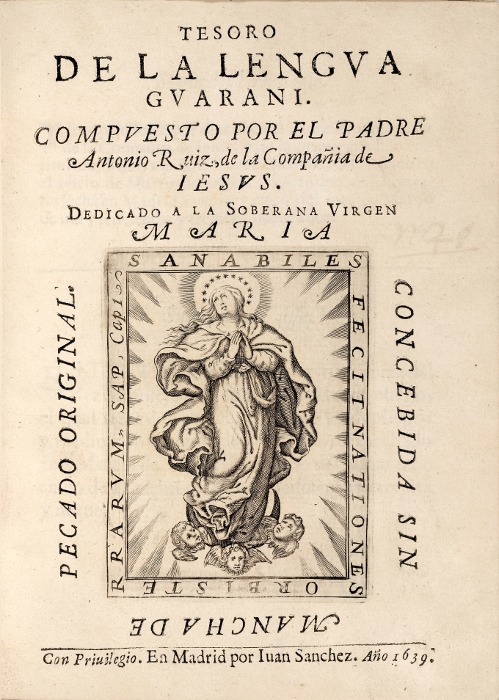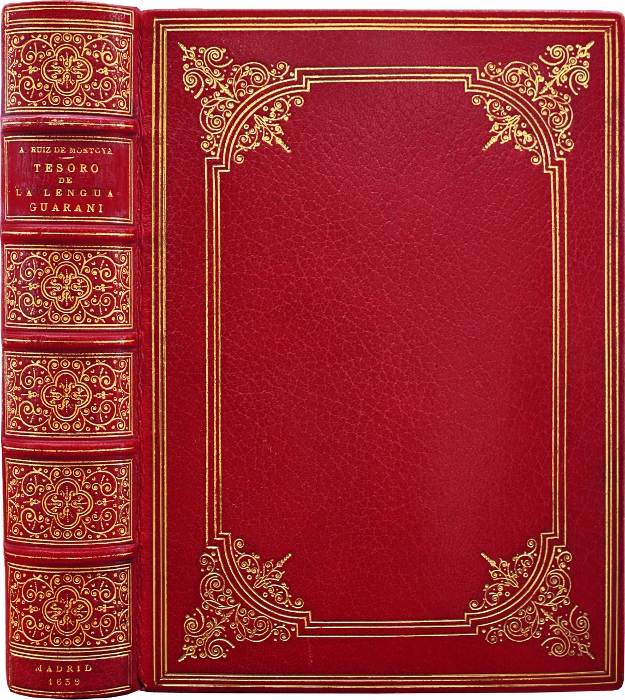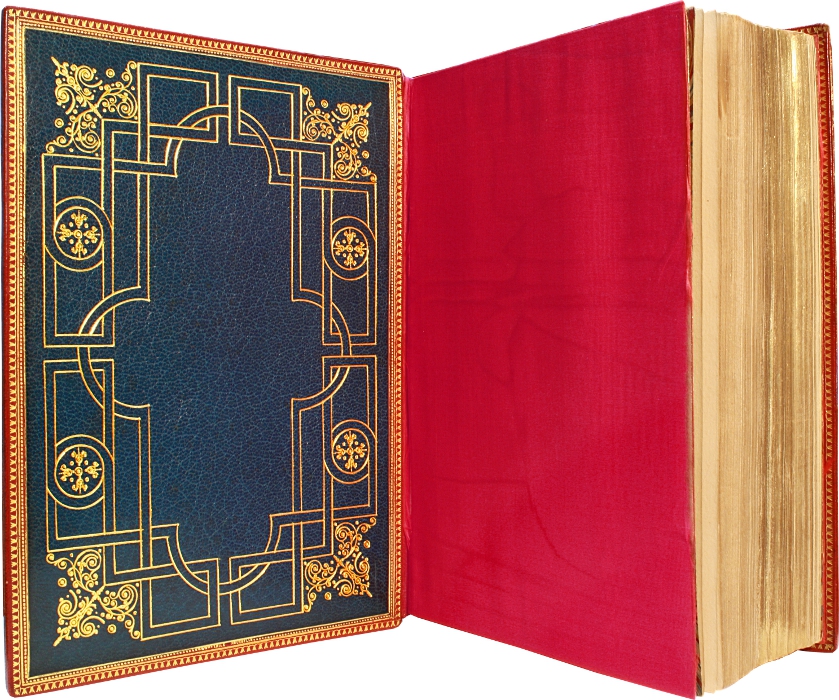Madrid, por Juan Sanchez, 1639.
4to [181 x 133 mm] of (8) ll., 407, (1) l. of privilege. Red morocco, two triple gilt fillets on the covers, gilt fleurons in the corners, spine ribbed and richly gilt, richly decorated blue morocco doublures, red watered silk endlêves, gilt edges. Binding signed Emile Rousselle.
First edition of “one of the most important publications of American linguistics” (Leclerc, 2869). Sabin, 74027; Palau, 282096; Brunet, IV, p. 1458; Medina, II, 1002; Ternaux, n°588.
“A book that became very rare.” (Brunet)
This work is one of the three texts that Father de Montoya wrote about Guarani, or Tupi, the language spoken by the Indians from Brazil and Paraguay.
The Paraguayan nation was built from the crossbreeding crêted since the beginning of colonization by missionaries and colonists. The Jesuit evangelization plan was set up at the beginning of the 17th century when the king of Spain granted the Society of Jesus the right to evangelize the Guarani people from Guaira. Eleven reductions were crêted between 1622 and 1629 by Father Antonio Ruiz de Montoya. The specificity of Jesuit evangelization being to become “barbarians among the barbarians” according to Ignatius of Loyola – that is to say to lêrn the Guarani language to use it to evangelistic ends – enabled the publication of catechisms in Guarani. The knowledge of Guarani myths was used as a basis for evangelization. Guarani is the generic name of a very significant linguistic family of the South-East of southern America. The Paraguayan Guarani used from the beginning of the contact with Spanish many Hispanicisms. Likewise, the Paraguayan Spanish suffered from interactions with the pre-Columbian Guarani.
The first Guarani grammars were written by Jesuit missionaries in the 17th and 18th centuries to respond to the colonial interests requiring the evangelization of the Indians in what was, then, the Spanish properties in Paraguay, and aimed at their political control.
Father Ruiz de Montoya, a famous missionary from Paraguay, was born in Lima in 1583. He joined the Society of Jesus, in 1606, and was sent to the missions where he converted more than a hundred thousand Indians. This lêrned Jesuit died in Lima in 1652. “Tupi-Guarani languages are spoken by many tribes in the South part of Brazil, in Paraguay, in Uruguay, Argentina and Bolivia. Among them, the Guarani language is the only one that has become, thanks to the Jesuits who made it the unique language of their missions, a language of culture. The Jesuit Antonio Ruiz de Montoya is the founder of the reductions in the south of Paraguay.” (W.Humboldt, Lettres édifiantes et curieuses, p. 113).
This work by F. Montoya “contains the Guarani-Spanish dictionary”. (Leclerc). It draws up the list of thousands of Guarani words with their Spanish translations, as well as numerous examples of their use in the Guarani language.
“Priced by Leclerc in 1881 at 800 francs” (Sabin).
This price approximately corresponds to the price of the first edition of Montaigne’s Essays of 1580, of which a very bêutiful copy in ancient morocco was sold for 955 fr. at the Labittesale of 1876. Such a copy would today be negotiated around 250 000 €.
A superb copy of this very rare work, preserved in its elegant binding in morocco with morocco doublures.




